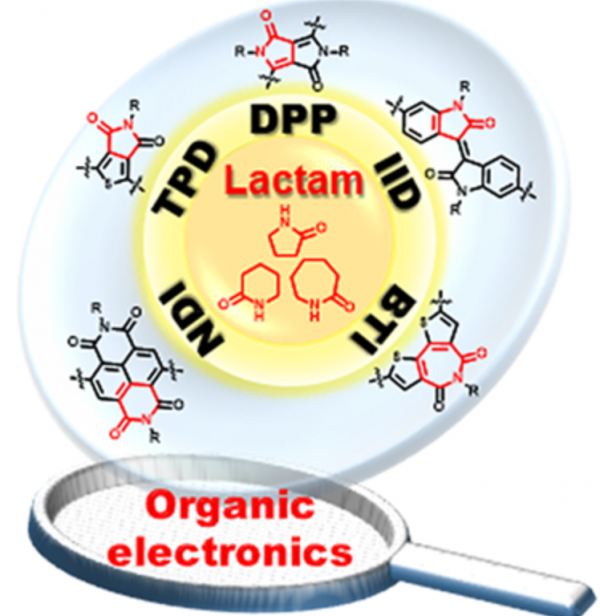Recent progress in lactam‐based polymer semiconductors for organic electronic devices
- 저자
- Kwang Hun Park, Ji-Young Go, Bogyu Lim*, Yong-Young Noh*
- 저널명
- Journal of Polymer Science, 60, 3, 429-485 (2022)
- 년도
- 2022
- Link
- https://doi.org/10.1002/pol.20210625 1301회 연결
[Abstract]
Numerous polymer semiconductor materials with alternating electron donor–electron acceptor (D–A) structures have attracted immense attention because they exhibit excellent semiconductor performance and solution processability. These materials can be used for the fabrication of various lightweight and flexible electronic devices. In this review, we provide a brief overview of the structural features and important properties of lactams whose performance can be enhanced by introducing an acceptor in the design of D–A-type polymer semiconductor materials. The focus is on polymer semiconductor materials with lactams in their structures, such as diketopyrrolo[3,4-c]pyrrole, naphthalene diimide, isoindigo, 2,2-bithiophene-3,3-dicarboximide, and thieno[3,4-c]pyrrole-4,6-dione. The recent advances made in the field in the last 3 years are discussed. In addition, the application of polymers for the fabrication of organic electronic devices and the progress in the field are discussed.
- 이전글Effect of Branching position of alkyl side chain on charge-transport characteristics of diketopyrrolopyrrole-and dichlorodithienylethene-based organic field-effect transistors 24.12.14
- 다음글Toward color-selective printed organic photodetectors for high-resolution image sensors: From fundamentals to potential commercialization 24.12.14
